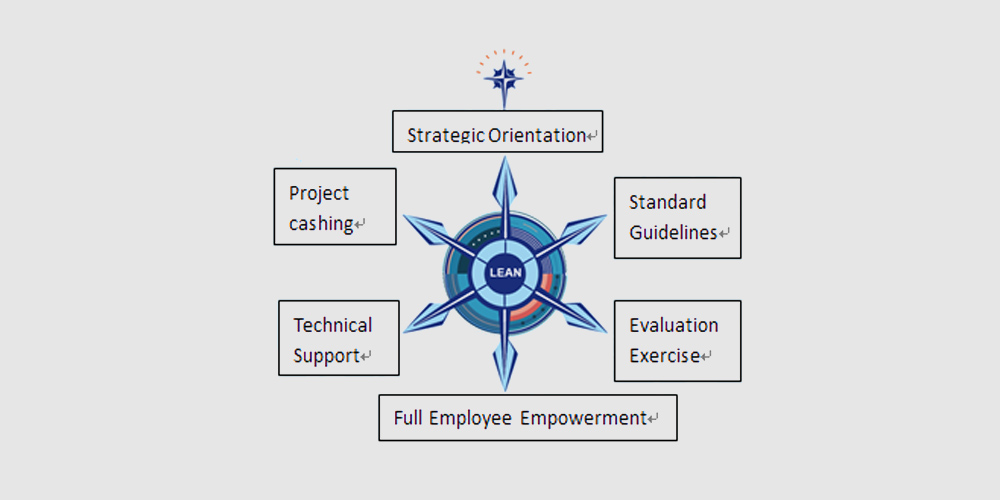Kaifa lean “Guidelines” alludes to the promotion of a new round of scientific and technological revolution and industry transformation in response to rapid, effective, and customized product supply. It is in accordance with the pull-type production model and JIT production concepts and continuously improves the level of lean production management and surpasses customer expectations. In addition, it also builds a systematic lean production management system with strategic orientation, standard guidelines, evaluation exercise, full employee empowerment, technical support and project cashing at its core. The system has the goal of improving the comprehensive strength of manufacturing technology, ensuring the sustainable development of the company, enhancing the level of smartification and promoting the development of the company’s smart manufacturing.

Kaifa Lean Guidelines
The establishment of Kaifa’s lean production maturity evaluation standards has laid the foundation for the Kaifa lean production management system. The use of maturity surveys serves to find gaps, set targets and encourage improvement. There are no unified industry standards for lean maturity in the EMS field. Kaifa used excellent performance models to formulate its own unique lean maturity standards. The lean maturity standard makes its value and positioning in the industry chain clear, unifies lean language, and involves the whole value creation process from when an order is received right up to the final delivery of the finished products. The lean standards are further divided into nine modules; lean policy, lean KPI, demand management, supply management, production workflow (method), production technology management, site management, continuous improvement mechanisms, and lean talent and organization The nine modules are based on the principles of strategic orientation and being based on processes and systems and are structured to display lean maturity standards with a total of 36 KPI indicators, 86 qualitative evaluation details that make up a grand total of 122 standard conditions. It meets the requirements of the company’s current situation and its future development trends.


